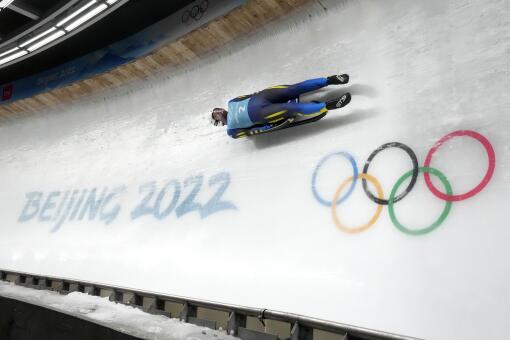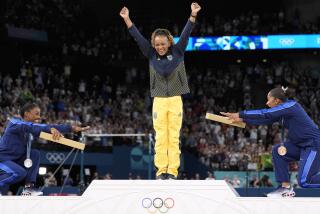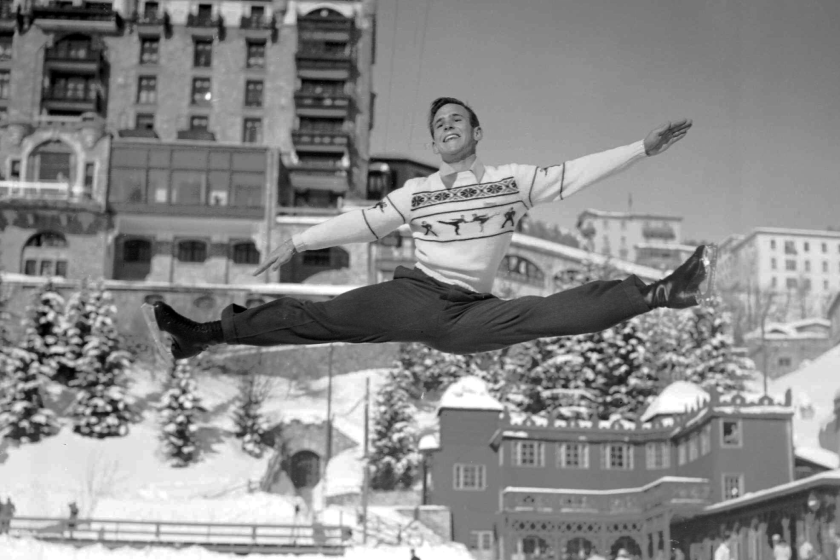Julia Marino claims silver as Jamie Anderson’s golden reign in slopestyle ends
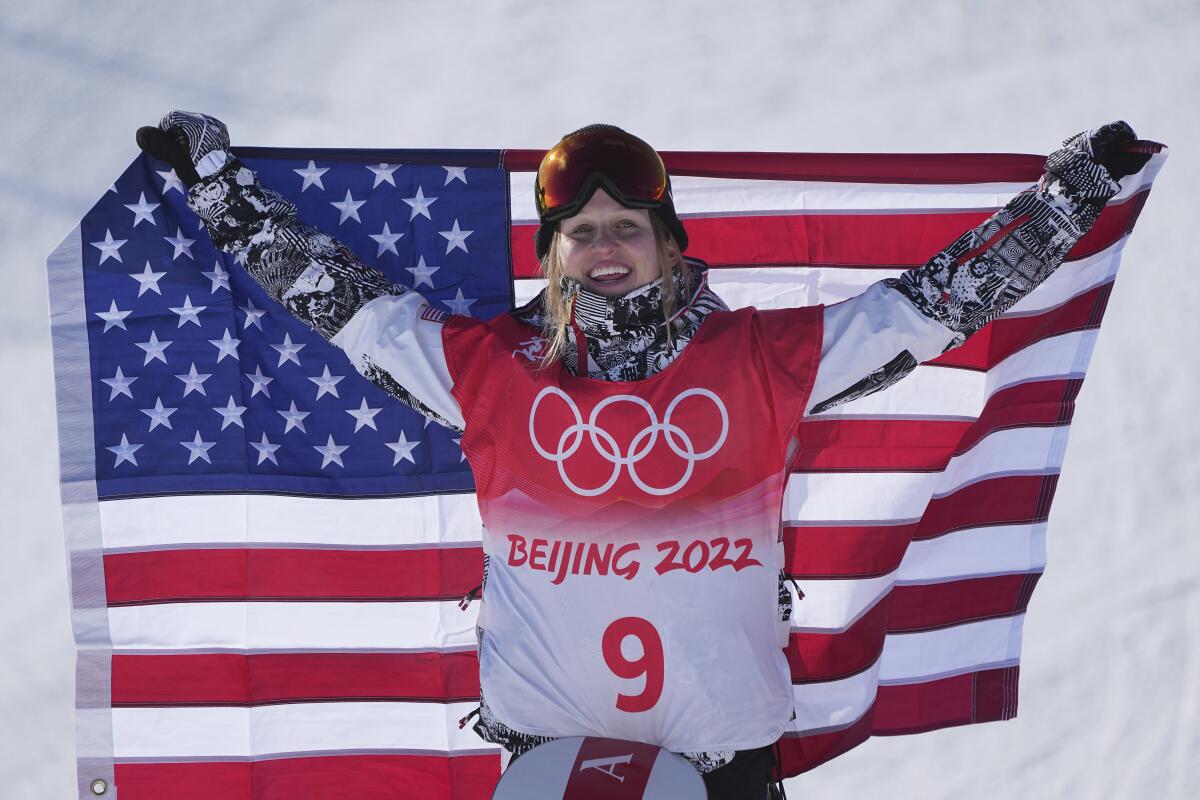
- Share via
ZHANGJIAKOU, China — As all eyes turned toward the podium positioned at the base of Genting Snow Park’s slopestyle course, Jamie Anderson slipped quietly through a maze of TV cameras, dragging her snowboard by her side.
It’s unfamiliar territory for the queen of slopestyle snowboarding.
New Zealand’s Zoi Sadowski-Synnott dethroned the two-time Olympic gold medalist in the women’s slopestyle final at Zhangjiakou Genting Snow Park on Sunday, winning gold on the last run of the day. Her clutch 92.88 points won New Zealand’s first Winter Olympic gold medal and knocked American Julia Marino from the top spot as the 24-year-old claimed silver for the United States’ first medal of the 2022 Games.
Marino vaulted into first place after her second of three runs after she fell on her final attempt. She hoped her score could keep her on the podium through the final five competitors. What could have been a nerve-racking wait was instead just an opportunity to “enjoy the rest of the show,” she said.
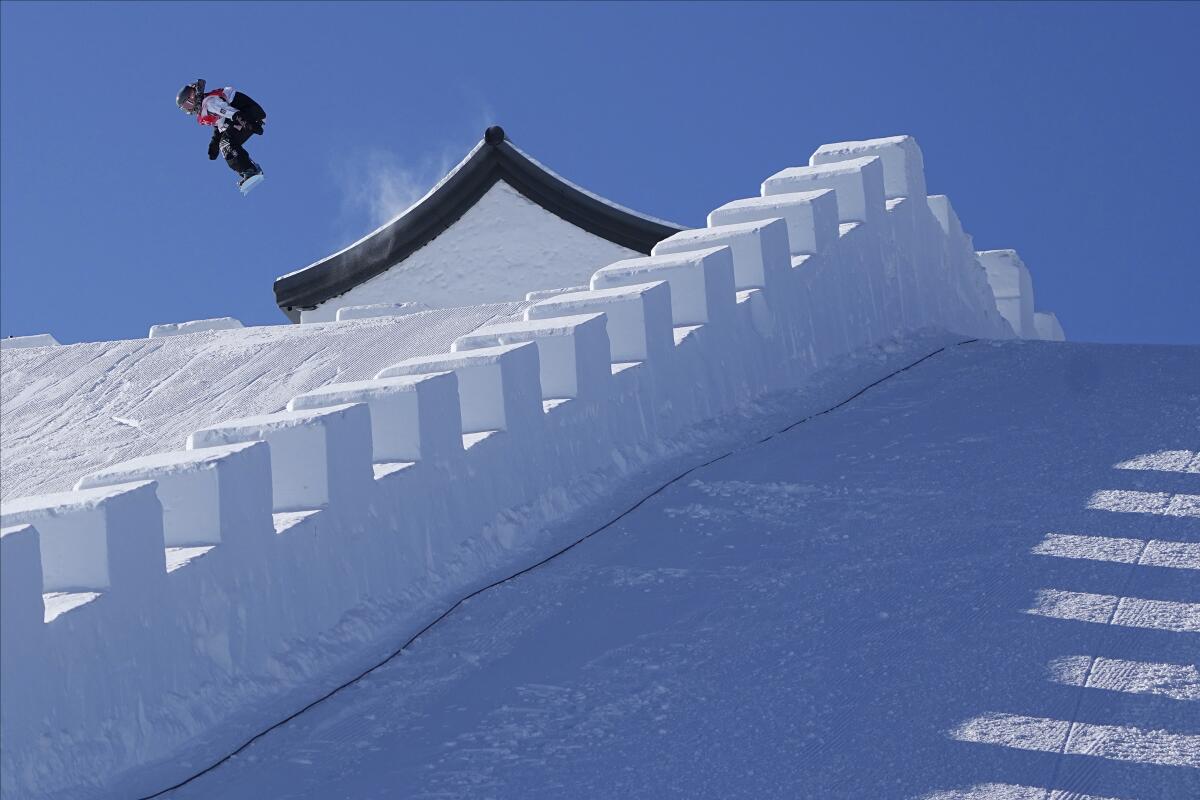
Once Sadowski-Synnott landed the second of consecutive 1080s, a repeat of a historic feat that won her gold at X Games two weeks ago, Marino was the first to charge the New Zealand rider and tackle her to the ground in celebration.
“I’m feeling a lot of feelings right now, honestly,” Marino said minutes after walking off the second step of the podium, “but mostly a lot of happiness and a lot of excitement for everything that happened today.”
Sadowski-Synnott’s victory marked a changing of the guard in slopestyle, where Anderson had won the only two gold medals since the discipline joined the Olympic program in 2014. While the 31-year-old Anderson finished ninth after falling on all three of her runs, 20-somethings dominated the podium with Sadowski-Synnott, 20, Marino and 21-year-old Australian Tess Coady taking bronze.
Although Anderson came to Beijing with an opportunity to become the first snowboarder to win four Olympic gold medals, she’s now accomplished another goal: inspiring the next generation to step out of her sizable shadow.
“Jamie is absolutely amazing and continues to inspire me every step of the way,” Sadowski-Synnott said. “She’s such a dark horse, you never know what she’s going to do.”
Anderson and Sadowski-Synnott jockeyed for podium position leading up to the Games. The 20-year-old from New Zealand entered the Olympics with momentum from two gold medals at the X Games last month, where she edged out Anderson in both slopestyle and big air.
Two weeks prior, Anderson threw down a clutch second run to knock the New Zealand rider from the top spot at a World Cup event at Mammoth Mountain. After Anderson’s victorious run, the star snowboarders shared a hug at the base of the course.
“True camaraderie,” Anderson wrote in an Instagram post with the photo.
“I need that kind of fire under my ass to keep me working hard and kind of keep me on my toes,” Anderson told reporters before the Olympics. “For a long part of my career, it was pretty easy to win, I didn’t really have to do much and I didn’t really have anyone pushing me and now I am very much pushed by everyone.”
When slopestyle made its Olympic debut, Anderson won the discipline’s inaugural gold medal with a run that included a 540 sandwiched between two clean 720s. Four years later, she battled tough conditions in Pyeongchang and upgraded one of the 720s, which features two full twists, to a cab underflip, a complicated trick that spins on two axes with one and a half twists and a flip.
But the tricks that won Anderson her second Olympic gold seem like quaint warmup skills compared to what Sunday’s medalists threw down on an idyllic, but cold morning about three hours northwest of Beijing. A 900 seemed standard. The top six riders each attempted 1080s. Marino landed the trick with three complete rotations on her final jump, sealing her podium position with her second run.
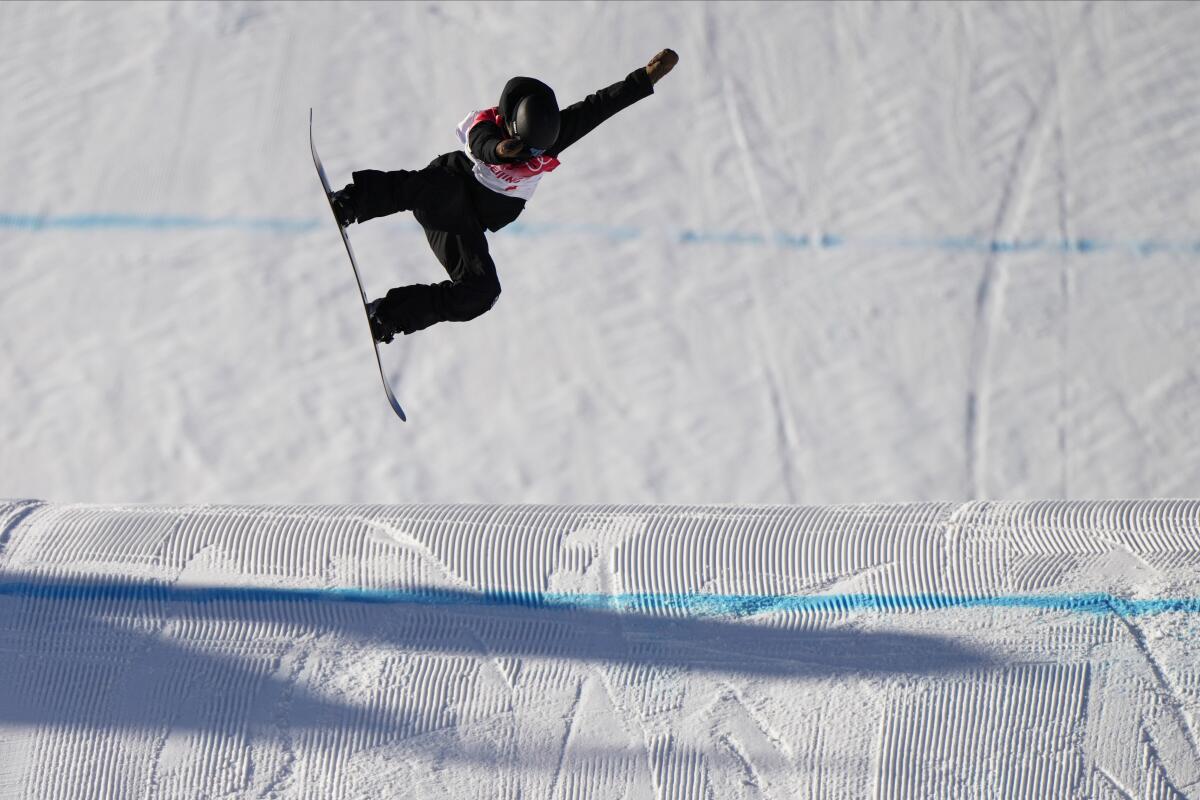
After Marino’s performance, TV cameras caught Anderson, who had underwhelming first and second runs, hugging her teammate and saying, “I’m so proud of you.”
Gusty conditions made for difficult riding in Pyeongchang, where many competitors were forced to water down their runs. Winds affected Saturday’s qualifying rounds, but by Sunday’s final, the course was calm. At least until Marino and Sadowski-Synnott started a dog pile at the bottom.
“It’s kind of exactly what this sport needed,” Marino said. “The girls have worked really hard over the past few years and this is what it should have been. Today, we all kind of put down our best tricks linked together in a slope run, which isn’t easy to do at all, so I just think it’s insanely huge for the progression of women’s snowboarding.”
More to Read
Go beyond the scoreboard
Get the latest on L.A.'s teams in the daily Sports Report newsletter.
You may occasionally receive promotional content from the Los Angeles Times.

